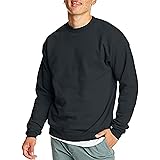All-new Amazon Echo Show 15 | A stunning HD 15.6" smart kitchen TV for home organization with Alexa
$299.99 (as of January 24, 2025 02:27 GMT +00:00 - More infoProduct prices and availability are accurate as of the date/time indicated and are subject to change. Any price and availability information displayed on [relevant Amazon Site(s), as applicable] at the time of purchase will apply to the purchase of this product.)Lipfidence Lip Lightening Cream for Dark Lips|Lip Lightener for Smokers and Non-Smokers | Help fade lip discoloration with Alpha Arbutin & Licorice Extract | Scented+Soothing Mint 10ml/0.33fl.oz
$22.99 (as of January 24, 2025 02:27 GMT +00:00 - More infoProduct prices and availability are accurate as of the date/time indicated and are subject to change. Any price and availability information displayed on [relevant Amazon Site(s), as applicable] at the time of purchase will apply to the purchase of this product.)Muddy Mat® Shown on TV–Super Absorbent Microfiber Dog Door Mat for Muddy Paws, Non-Slip Washable Pet Rug, Quick Dry Chenille Entryway Carpet, Machine Washable Indoor Outdoor mat–Atlantic Blue 28"x18"
$19.95 (as of January 24, 2025 02:27 GMT +00:00 - More infoProduct prices and availability are accurate as of the date/time indicated and are subject to change. Any price and availability information displayed on [relevant Amazon Site(s), as applicable] at the time of purchase will apply to the purchase of this product.)Amazon Basics Dog and Puppy Pee Pads with 5-Layer Leak-Proof Design and Quick-Dry Surface for Potty Training, Heavy Duty Absorbency, X-Large, 28 x 34 Inch - Pack of 25, Blue & White
$17.54 (as of January 24, 2025 02:27 GMT +00:00 - More infoProduct prices and availability are accurate as of the date/time indicated and are subject to change. Any price and availability information displayed on [relevant Amazon Site(s), as applicable] at the time of purchase will apply to the purchase of this product.)Charger for MacBook Air MacBook Pro 13 14 15 16 inch 2024 2023 2022 2021 2020, M1 M2 M3 M4 Laptop 70W USB C Power Adapter, iPad, LED, 6.6FT USB-C Cable, Charging as Fast as Original Quality
$27.99 (as of January 24, 2025 02:27 GMT +00:00 - More infoProduct prices and availability are accurate as of the date/time indicated and are subject to change. Any price and availability information displayed on [relevant Amazon Site(s), as applicable] at the time of purchase will apply to the purchase of this product.)In an era dominated by digital documents and cloud storage, the humble filing cabinet remains a steadfast companion to professionals and organizations around the world. This stalwart of office furniture has been serving as a repository for important papers and files since the late 19th century, with its design undergoing numerous iterations over the years to meet the evolving needs of users.
History of Filing Cabinets
The first filing cabinets were introduced in the 1880s by a German engineer named Wilhelm Liese, who patented a device that used cardboard folders and a system of guides to store documents. These early cabinets were relatively simple in design, with wooden frames and metal fasteners holding the files in place.
In the mid-20th century, filing cabinets became more sophisticated, with the introduction of steel and aluminum construction, as well as innovative features such as drawers, locks, and adjustable shelves. Modern filing cabinets now come in a range of styles, from sleek and minimalist to robust and industrial-strength.
Types of Filing Cabinets
Filing cabinets are available in various configurations to suit different needs:
- Vertical filing cabinets: These are the most common type, with files stored in vertical rows on shelves or drawers.
- Lateral filing cabinets: Files are stored in horizontal rows, often used for larger documents or maps.
- Mobile filing cabinets: Designed for easy mobility and flexibility, these cabinets feature casters or wheels to facilitate movement around the office.
- Fireproof filing cabinets: These high-security cabinets provide protection against fire damage and data loss.
Materials and Construction
Filing cabinets can be made from a variety of materials, including:
- Steel: Strong, durable, and resistant to rust, steel is a popular choice for modern filing cabinets.
- Aluminum: Lightweight and corrosion-resistant, aluminum is often used in high-end or designer models.
- Wood: Wooden filing cabinets offer a classic look and feel, with options ranging from solid wood to veneered surfaces.
Features and Accessories
Modern filing cabinets often come equipped with various features and accessories, such as:
- Locks: Mechanical locks provide secure storage for sensitive documents.
- Drawers: Some filing cabinets feature drawers or compartments for storing smaller items like pens or paper clips.
- Adjustable shelves: These allow users to customize the storage capacity of their cabinet.
- Label holders: Conveniently store labels or tabs on the outside of the drawer for easy identification.
Comparison with Digital Storage
While digital storage solutions have become increasingly popular, filing cabinets still offer several advantages:
- Tactile experience: Filing cabinets provide a hands-on approach to document management, allowing users to touch and see their files.
- Security: Physical files are less vulnerable to hacking or data breaches than digital documents.
- No power required: Filing cabinets do not need electricity to function, making them ideal for areas with limited power availability.
Conclusion
The filing cabinet remains a timeless storage solution for the modern office. Its enduring popularity can be attributed to its reliability, flexibility, and ability to provide secure storage for sensitive documents. Whether you prefer traditional wooden cabinets or sleek steel models, there’s a filing cabinet to suit your needs and preferences.
Technical Specifications:
- Dimensions: Varying sizes available, including compact, standard, and large formats.
- Materials: Steel, aluminum, wood, or other materials depending on the manufacturer and model.
- Capacity: Filing cabinets can store anywhere from 2-100 drawers, each holding multiple files.
- Security features: Locks, combination locks, or high-security mechanisms provide added protection for sensitive documents.
- Ergonomic design: Some filing cabinets feature ergonomic handles or adjustable shelves to reduce strain on users.








